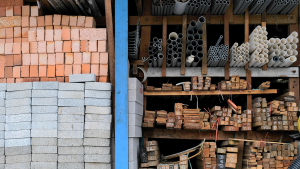The most important aspect of the business case, in terms of prudent municipal management, is the cost estimate that it includes.
If this figure is unreliable, then any decision made as to whether to proceed with the project is grounded in quicksand. For most municipalities, the costs of construction dwarf the costs of procuring other goods and services.
Given the municipal budget approval process, it is clearly necessary to have some idea of anticipated cost before any project can be approved. However, fixing the approximate cost of the construction “product” can be difficult.
For instance, historic data is often used to predict likely cost and anticipated cost escalation over the time period required to complete the project.
Fixed prices can be obtained for the contract, but estimates are all that can be used to get the project approved. It is important to make sure that the correct reference rates are used.
Statistics Canada offers seven different construction price indices. Of which two are output, four input and one seller’s price index.
Output price indices may include professional fees (such as architects, lawyers, engineers) to the extent that they are initially paid by the construction contractor and subsequently included in the output price paid by the developer.
The same principals apply to other cost elements. The development of reliable construction price indices requires a thorough understanding of all stages of the construction process from the materials supply through to the sale of the completed “product” to the final owner.
It is wise to use several different indices when preparing a budget, using an average of the various costs provided, so as to get a more balanced picture of actual market pricing.
Even then, the figure obtained is only a slightly more refined approximate. The makeup of final cost is heavily determined by the kind of building that is to be constructed.
For instance, soft costs are disproportionate for mid-rise projects in comparison to highrise because the cost of professional expertise can be the same for both types of product. The larger project allows the cost to be spread out over more units.
Hard construction costs are also typically higher per square foot of usable space for mid-rise building than highrise.
However, certain design features, such as terracing of the upper floors (or setbacks) can add significantly to cost. Mid-rise construction cost issues often include shorting and pinning to project neighbouring buildings that are built to a lot line.
While the costs of building can be estimated in principle, it is as important to pay attention to the true costs of not proceeding with the project as it is to the costs of undertaking it.
As a general rule, no one likes to commit substantial resources to a project unless there is a clear benefit in doing so. Very often there will be a scramble to find cheaper alternatives than proceeding with the project.
Unfortunately, it is not unusual to find the “cheaper” alternative will prove to be more expensive. This is especially true with respect to the refurbishment and expansion of an existing building, in contrast to the construction of a new one.
It is common wisdom that the estimated costs of refurbishment are generally only half the actual costs when refurbishment is undertaken because of the wide range of unknown factors when dealing with an existing structure.
In addition to actual out-of-pocket costs, one must also consider lost productivity during the process of refurbishment and the possible perpetuation of built-in inefficiencies that result from the current arrangement or building structure. Even if refabrication may still appear to be a cheaper option it is essential to make sure that price comparisons are realistic.
When preparing any estimate, appropriate engineering or other professional advice must be obtained in regard to any assumption made.
Stephen Bauld is a government procurement expert and can be reached at swbauld@purchasingci.com. Some of his columns may contain excerpts from The Municipal Procurement Handbook published by Butterworths.









Recent Comments
comments for this post are closed